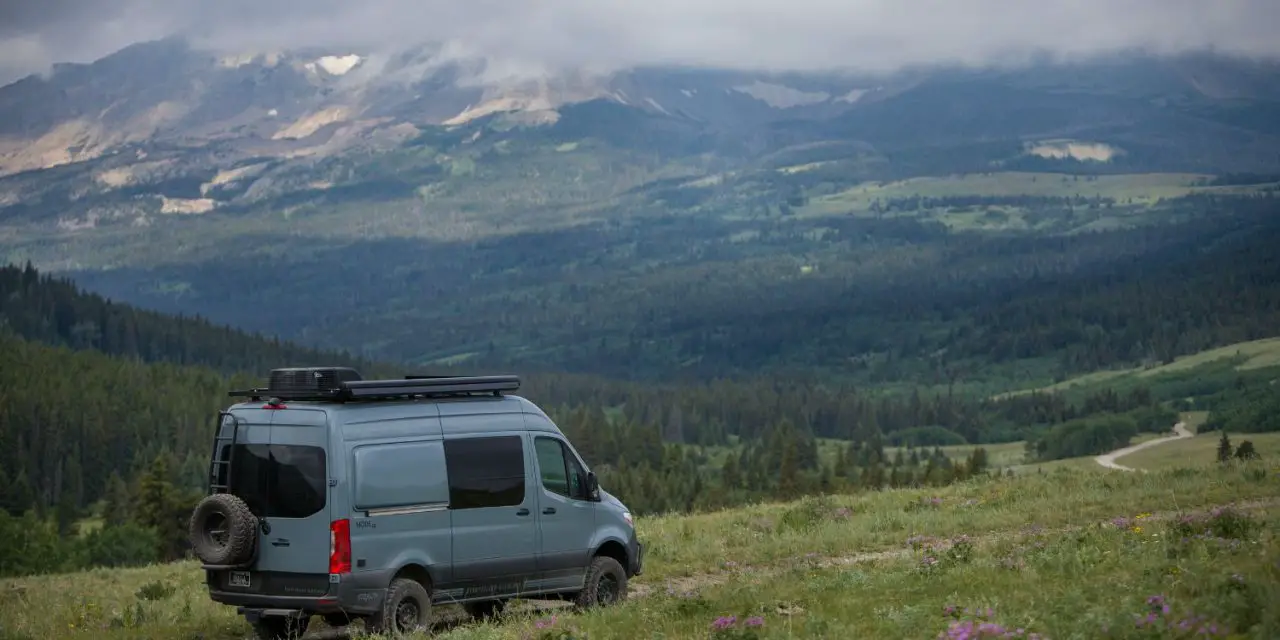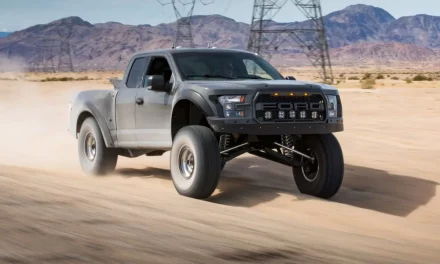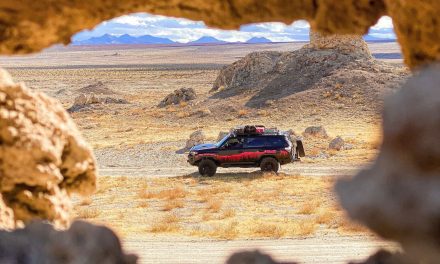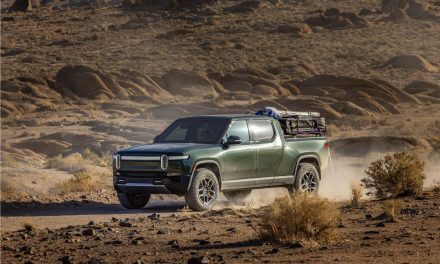Tackling unpaved roads may seem like an exciting proposition if you’re seeking adventure or you want to test the capabilities of your 4×4. A great way to satisfy this urge is to go overlanding or off-roading. So, what are the differences between overlanding and off-roading?
Overlanding and off-roading are often used interchangeably since they both include driving on unpaved roads. Overlanding is more about taking your vehicle on a self-sufficient expedition, while off-roading focuses on the rig and the driver’s ability to overcome challenging terrain.
Stick around to eliminate any confusion about overlanding and off-roading. This article will explain the difference between the two terms and describe how to set up a vehicle, depending on what appeals to you more. Let’s get started!
Jump to:
At a glance, off-roading and overlanding may appear similar. Both activities typically involve a body-on-frame vehicle traversing rough terrain, so it’s understandable how some people might mistake one for the other.
However, as we explore each activity more closely in this article, you’ll see that they actually have glaring differences. Let’s compare them in more detail below:
What is Overlanding?
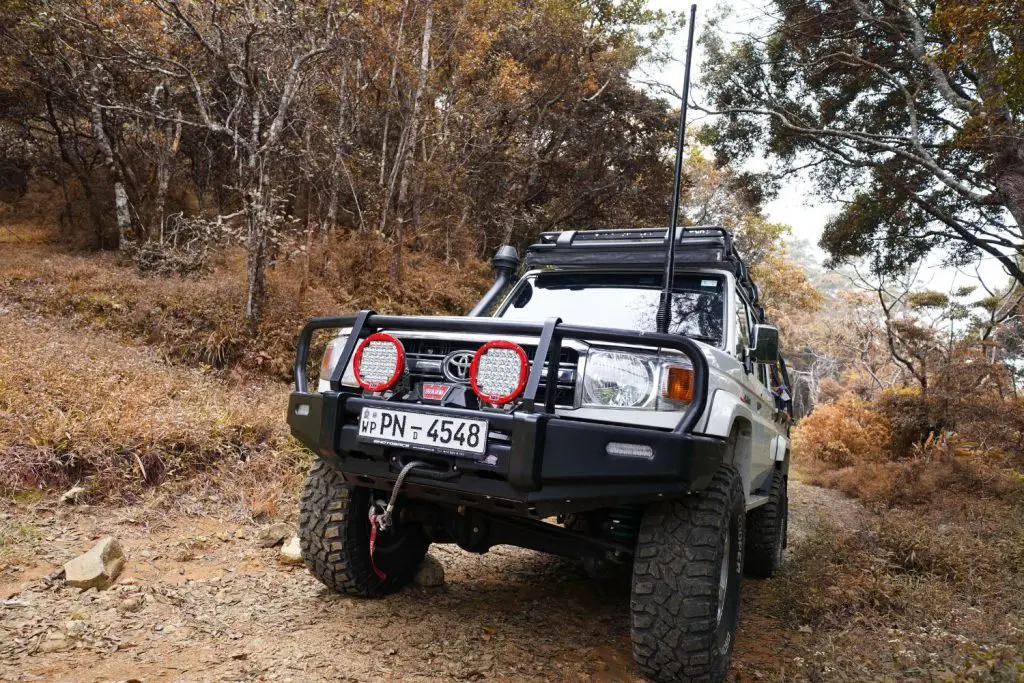
The term overlanding was initially coined in Australia to describe the act of leading livestock to the market. In modern times, overlanding refers to a self-reliant journey with a mechanized vehicle and is done for leisure rather than necessity. One thing, however remains, and that is the fact that overlanding involves traveling great distances over various forms of the terrain.
People often confuse overlanding with off-roading since they both involve driving off the road. But even though overlanding usually consists of some off-roading, the essence of the activity is the exploration and not having to depend on anyone else for essentials, such as food and shelter. Many overloaders don’t have a set destination but can spend days, weeks, or months embarking on their journey.
Here is what sets overlanding apart from off-roading:
- Overlanding is more of an expedition
- Overlanding is the perfect getaway if you want to stay under the radar
- Overlanding usually involves camping in remote and isolated areas
- Overlanding is focused more on the journey and the exploration, though you may have multiple stopovers or destinations
- Overlanding often takes time and requires supplies such as food, water, and other essentials
The Right Vehicle for Overlanding
Aside from being able to drive over unpaved roads, overland vehicles (even electric vehicles) must also be comfortable for the occupants and have enough space for all your equipment. Any vehicle with relatively high ground clearance can be used as an overlander, but an ideal choice would be a mid or full-sized SUV (like these ones).
Keep in mind that this vehicle will be your home away from home during your expedition, so it needs to be built for self-reliance and moderate off-roading.
Below are some valuable features or accessories for an overlander:
- High ground clearance
- All-terrain tires
- Spacious interior
- Satellite navigation
- Adequate utility and storage
- Custom drawer systems (we have a whole article about the best ones here)
- Rooftop tent or awning
What is Off-Roading
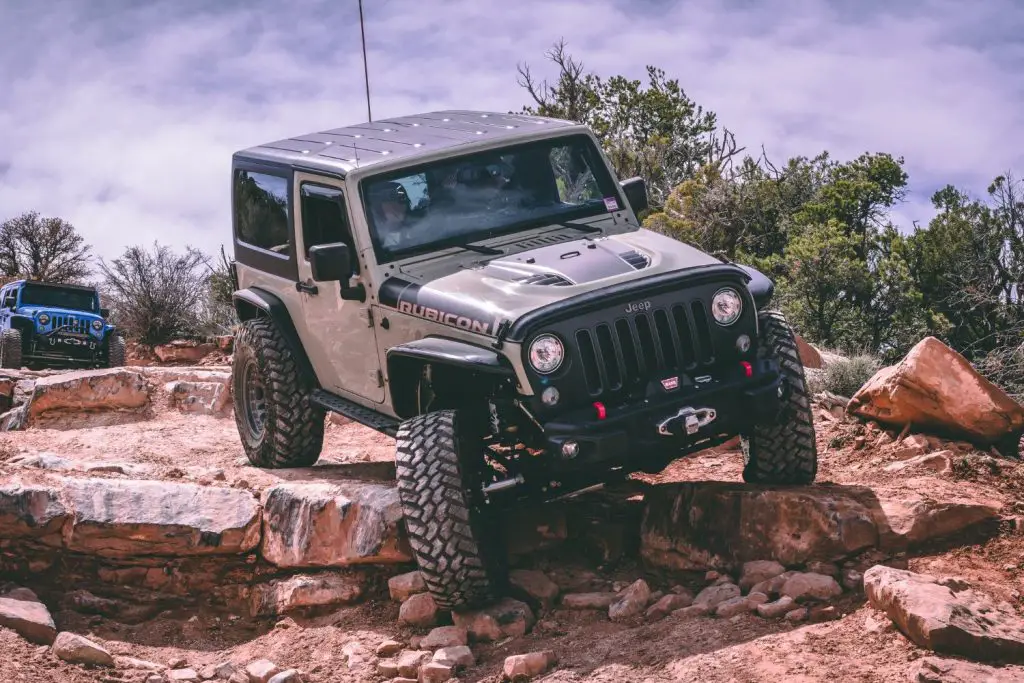
Off-roading is basically driving a vehicle over an unpaved surface. However, as a hobby or recreational activity, off-roading can get quite technical or extreme as it involves pushing the limits of a driver’s skills and a vehicle’s capabilities to overcome more challenging terrain.
Many production SUVs and body-on-frame vehicles will have off-road capabilities. Still, hardcore off-roaders will have dedicated rigs that are heavily modified to traverse surfaces that most cars would otherwise avoid.
The main features of off-roading include the following:
- Off-roading is focuses more on the terrain rather than the journey
- The main goal of off-roading is to overcome obstacles
- Off-roading is usually done on a set trail
- Serious off-roading can require many modifications to a vehicle
Different Types of Off-Roading
There are various kinds of off-roading, depending on the terrain. Off-road vehicles must be set up according to the kind of off-roading they will undergo. The skill required from the driver will also vary based on the type of trail they wish to tackle.
Here are the different forms of off-roading:
- Light trails: Light trails are suitable for beginners since they consist of unpaved surfaces that are moderately rough, making it relatively easy for off-road vehicles to traverse.
- Rock crawling: As the name suggests, rock crawling involves slowly driving over rocks and boulders. This form of off-roading requires more skill and vehicle modifications since the dips and peaks are quite extreme.
- Mudding: Mudding is the process of driving through wet mud or clay. The biggest challenge with mudding is the lack of traction, which causes many vehicles to get stuck.
- Dune bashing: Dune bashing is driving up and down through dunes while trying to avoid getting stuck or rolling over.
The Right Vehicle for Off-Roading
Unlike an overlander, which is supposed to be livable and comfortable, the primary focus of an off-roader is getting over obstacles. Any vehicle you plan to go off-roading with should have high ground clearance and four-wheel drive, but this doesn’t mean any automobile with these traits will make a good off-roader.
Here are some features that are ideal for off-roading
- Solid axle for better wheel travel and articulation
- Locking differential to distribute power evenly to all wheels
- Low gearing to distribute torque at low RPM
Given the extreme terrain an off-roader must traverse, it helps to have a vehicle with a short wheelbase and wheels close to the corners. This configuration gives the vehicle better approach, departure, and break-over angles.
At the very least, an off-roader should have all-terrain tires that are made to run over sand, gravel, and light soil. However, mud-terrain tires are your best bet if you drive over softer terrain since their aggressive tread patterns increase your traction.
Many vehicles are ideal for off-roading straight out of the factory. These include the following:
- Suzuki Jimny
- Ford Bronco
- Jeep Rubicon
- Land Rover Defender
However, despite a vehicle’s inherent capabilities, many off-road enthusiasts modify their vehicle to improve its capabilities.
Here are common modification ideas for off-roaders:
- Lift kit or aftermarket suspension
- Winch
- Snorkel
- Body armor
- Skid plates
Final Thoughts
Off-roading is the way to go if you want to test your skills and the capabilities of your four-wheel drive. However, if you’re more interested in exploration and getting away from it all, overlanding can be the perfect escape. But regardless of which activity you decide to pursue, ensure you are well prepared and have a suitable vehicle and the right equipment.

